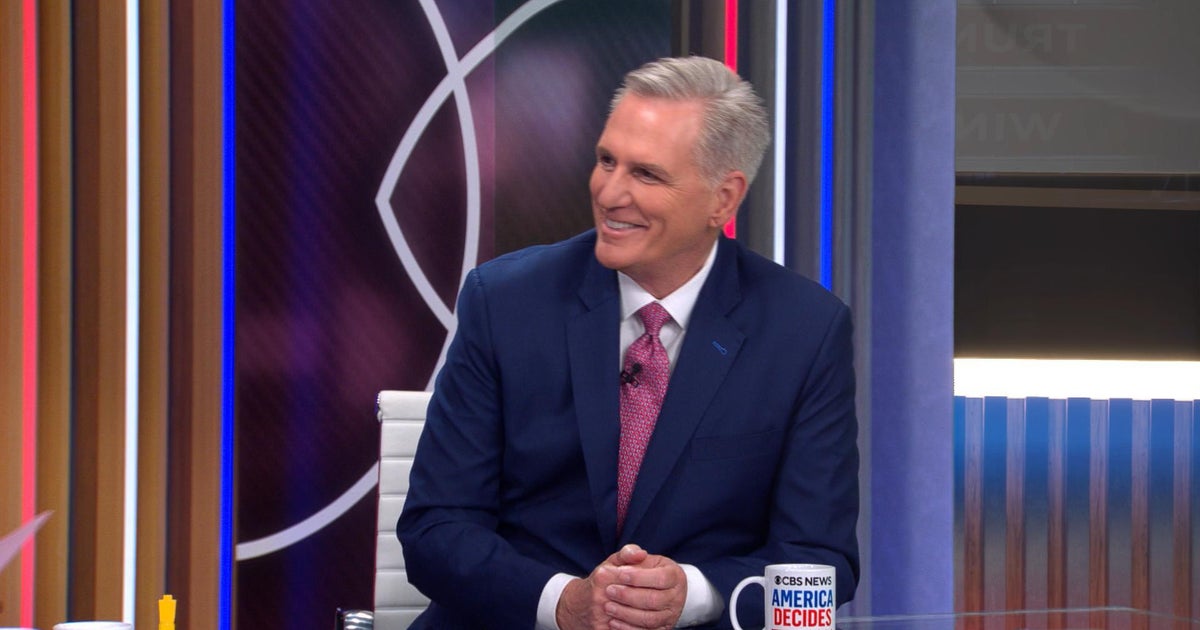Dance program provides artistic expression and support for people with Down syndrome: "Dance is our universal language"
An innovative dance program is helping people with Down syndrome build a stronger sense of self and community through creativity, collaboration and compassion.
Annie Griffith and Sari Anna Thomas started the nonprofit, Down for Dance in 2017. It currently serves about 200 students in 22 states.
"I started Down for Dance because I have a brother, Sam, with Down syndrome," Griffith said. "Growing up with him, I really just saw that there wasn't a lot of this type of programming for that population."
The nonprofit, located in California, offers in-person and online programs, including focuses on dance, art and yoga.
"They love music. They're visual learners. This is what I always say, that dance is our universal language," Griffith said. "Some may be non-verbal, but we, when we come into this space, like we all dance and we all understand each other.
The dancers start as young as 7 years old. The oldest is 62.
"We're not dumbing down the choreography," Thomas said. "They are the ones that are now raising the bar. It's not me. I'm just catching up. That to me is what drives a lot of the work that I do. I wanna get them out in the community, like the world needs to see that the bar is not low."
Sarah Jensen's class at Down for Dance is her favorite activity. She enjoys dancing to Broadway shows like "Hamilton," the hit musical the class is a couple of weeks into learning routines from.
"My favorite thing is to dance to my favorite songs, like Beyoncé, and musical theater," she said.
But there was a time when people like Sarah Jensen weren't expected to live past the age of 10. Her mother, Linda Jensen, said when she gave birth to Sarah 21 years ago, there was a lot she didn't know.
"I was pretty naive about, you know, what it entailed, didn't know anything about therapies, or, you know, medical care," Linda Jensen said.
About 5,700 babies are born with Down syndrome each year in the U.S., according to the Centers for Disease Control and Prevention. Like many babies born with Down syndrome, Sarah Jensen had to have multiple surgeries – twice for heart defects and two more times on her eyes. All of the surgeries were before she reached the age of 3.
"She has rheumatoid arthritis. Why does it go into remission and why does it flare up? She has thyroid issues, so it's just juggling all the different things that come up," Linda Jensen said.
But thanks in part to early intervention, medical advancements and the growth of support networks like Down for Dance, Sarah Jensen and others in the Down syndrome community are now living much longer lives.
Data from the CDC shows the average life expectancy for a person with Down syndrome in 1960 was 10 years old. In 2007, it was about 47 years old.
Thanks to a strict schedule of strength and training classes, speech therapy and community college courses, Sarah Jensen is living without inhibitions. She met her boyfriend, Mason, when they were little kids, and thinks they may get married one day.
Meanwhile, Thomas has a message she wants others to know about people with Down syndrome.
"They tend to be fearless, and they're just willing to try and give a hundred percent and dive in."




